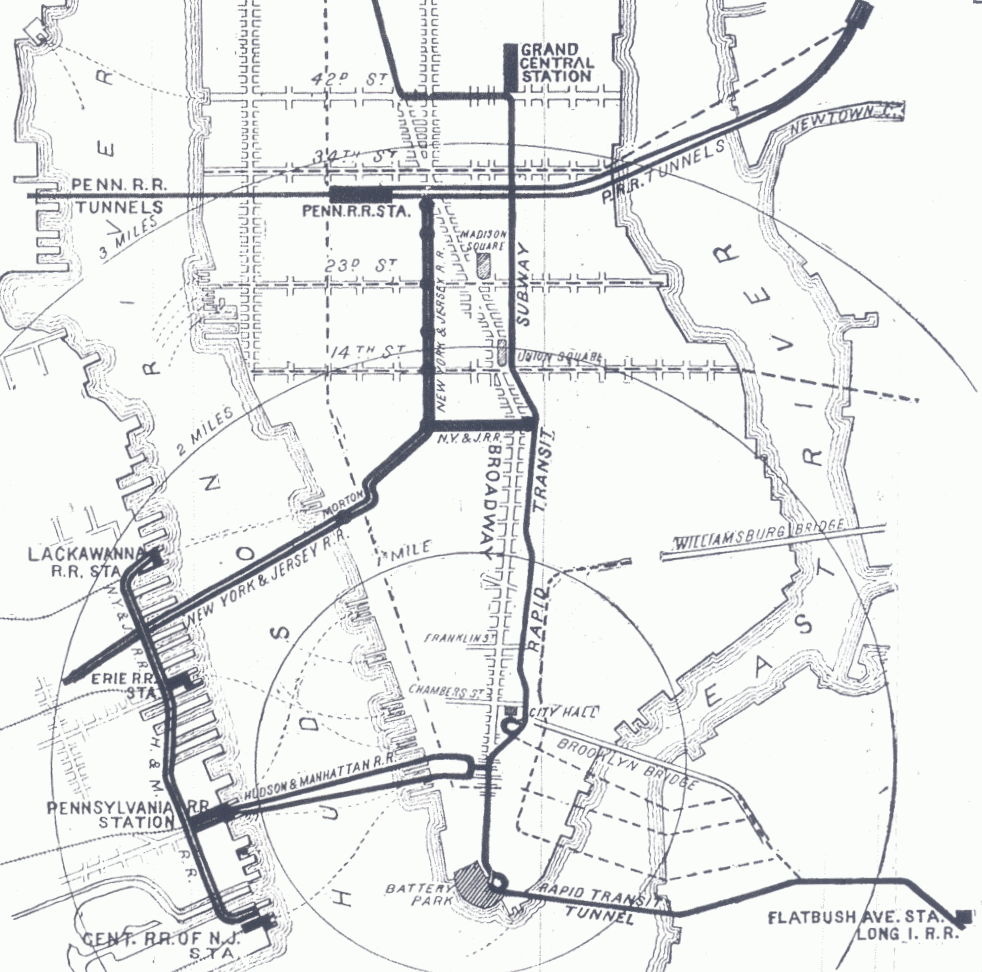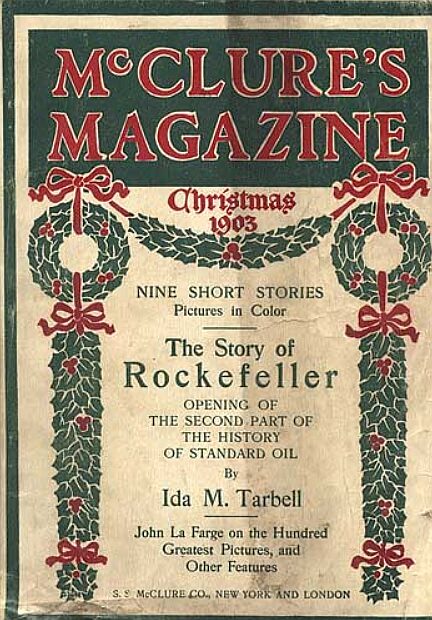|
New York Port Authority
The Port Authority of New York and New Jersey, PANYNJ; stylized, in logo since 2020, as Port Authority NY NJ, is a joint venture between the U.S. states of New York (state), New York and New Jersey, established in 1921 through an interstate compact Compact Clause, authorized by the United States Congress. The Port Authority oversees much of the regional transportation infrastructure, including bridges, tunnels, airports, and seaports, within the geographical jurisdiction of the Port of New York and New Jersey. This port district is generally encompassed within a radius of the Statue of Liberty National Monument. The Port Authority is headquartered at 4 World Trade Center. The Port Authority operates the Port Newark–Elizabeth Marine Terminal, which handled the third-largest volume of shipping among all ports in the United States in 2004, and the largest on the East Coast of the United States, Eastern Seaboard. The Port Authority also operates six bi-state crossings: three con ... [...More Info...] [...Related Items...] OR: [Wikipedia] [Google] [Baidu] |
Port District
In Canada and the United States, a port authority (less commonly a port district) is a governmental or quasi-governmental public authority for a special-purpose district usually formed by a legislative body (or bodies) to operate ports and other transportation infrastructure. In Canada, the federal Minister of Transport (Canada), Minister of Transport selects the local chief executive board member and the rest of the board is appointed at the recommendation of port users to the federal Minister; while all Canadian port authorities have a federal or Crown charter called ''Letters Patent''. Numerous Caribbean nations have port authorities, including those of Aruba, British Virgin Islands, Bahamas, Jamaica, Cayman Islands, Trinidad and Tobago, St. Lucia, St. Maarten, St. Vincent and the Grenadines. Central and South America also have port agencies such as ''autoridad'' and ''consorcio'' (authority and consortium). In Mexico, the federal government created sixteen port administration ... [...More Info...] [...Related Items...] OR: [Wikipedia] [Google] [Baidu] |
Port Authority Trans-Hudson
Port Authority Trans-Hudson (PATH) is a rapid transit system in the northeastern New Jersey cities of Newark, Harrison, Jersey City, and Hoboken, as well as Lower and Midtown Manhattan in New York City. It is operated as a wholly owned subsidiary of the Port Authority of New York and New Jersey. PATH trains run around the clock year round; four routes serving 13 stations operate during the daytime on weekdays, while two routes operate during weekends, late nights, and holidays. It crosses the Hudson River through cast iron tunnels that rest on the river bottom. It operates as a deep-level subway in Manhattan and the Jersey City/Hoboken riverfront; from Grove Street in Jersey City to Newark, trains run in open cuts, at grade level, and on elevated track. In , the system saw rides, or about per weekday in . The routes of the PATH system were originally operated by the Hudson & Manhattan Railroad (H&M), built to link New Jersey's Hudson Waterfront with New York City. The sys ... [...More Info...] [...Related Items...] OR: [Wikipedia] [Google] [Baidu] |
Progressive Era
The Progressive Era (late 1890s – late 1910s) was a period of widespread social activism and political reform across the United States focused on defeating corruption, monopoly, waste and inefficiency. The main themes ended during American involvement in World War I (1917–1918) while the waste and efficiency elements continued into the 1920s. Progressives sought to address the problems caused by rapid industrialization, urbanization, immigration, and political corruption; and by the enormous concentration of industrial ownership in monopolies. They were alarmed by the spread of slums, poverty, and what they perceived as the "exploitation" of labor. Multiple overlapping progressive movements fought perceived social, political and economic ills by advancing democracy, scientific methods, professionalism and efficiency; regulating businesses, protecting the natural environment, and improving working conditions in factories and living conditions of the urban poor. Sprea ... [...More Info...] [...Related Items...] OR: [Wikipedia] [Google] [Baidu] |
American Bar Association
The American Bar Association (ABA) is a voluntary bar association of lawyers and law students, which is not specific to any jurisdiction in the United States. Founded in 1878, the ABA's most important stated activities are the setting of academic standards for law schools, and the formulation of model ethical codes related to the legal profession. As of fiscal year 2017, the ABA had 194,000 dues-paying members, constituting approximately 14.4% of American attorneys. In 1979, half of all lawyers in the U.S. were members of the ABA. The organization's national headquarters are in Chicago, Illinois, and it also maintains a significant branch office in Washington, D.C. History The ABA was founded on August 21, 1878, in Saratoga Springs, New York, by 75 lawyers from 20 states and the District of Columbia. According to the ABA website: The purpose of the original organization, as set forth in its first constitution, was "the advancement of the science of jurisprudence, the pro ... [...More Info...] [...Related Items...] OR: [Wikipedia] [Google] [Baidu] |
Constitution Of The United States
The Constitution of the United States is the supreme law of the United States of America. It superseded the Articles of Confederation, the nation's first constitution, in 1789. Originally comprising seven articles, it delineates the national frame of government. Its first three articles embody the doctrine of the separation of powers, whereby the federal government is divided into three branches: the legislative, consisting of the bicameral Congress ( Article I); the executive, consisting of the president and subordinate officers ( Article II); and the judicial, consisting of the Supreme Court and other federal courts ( Article III). Article IV, Article V, and Article VI embody concepts of federalism, describing the rights and responsibilities of state governments, the states in relationship to the federal government, and the shared process of constitutional amendment. Article VII establishes the procedure subsequently used by the 13 states to ratify it. It is ... [...More Info...] [...Related Items...] OR: [Wikipedia] [Google] [Baidu] |




